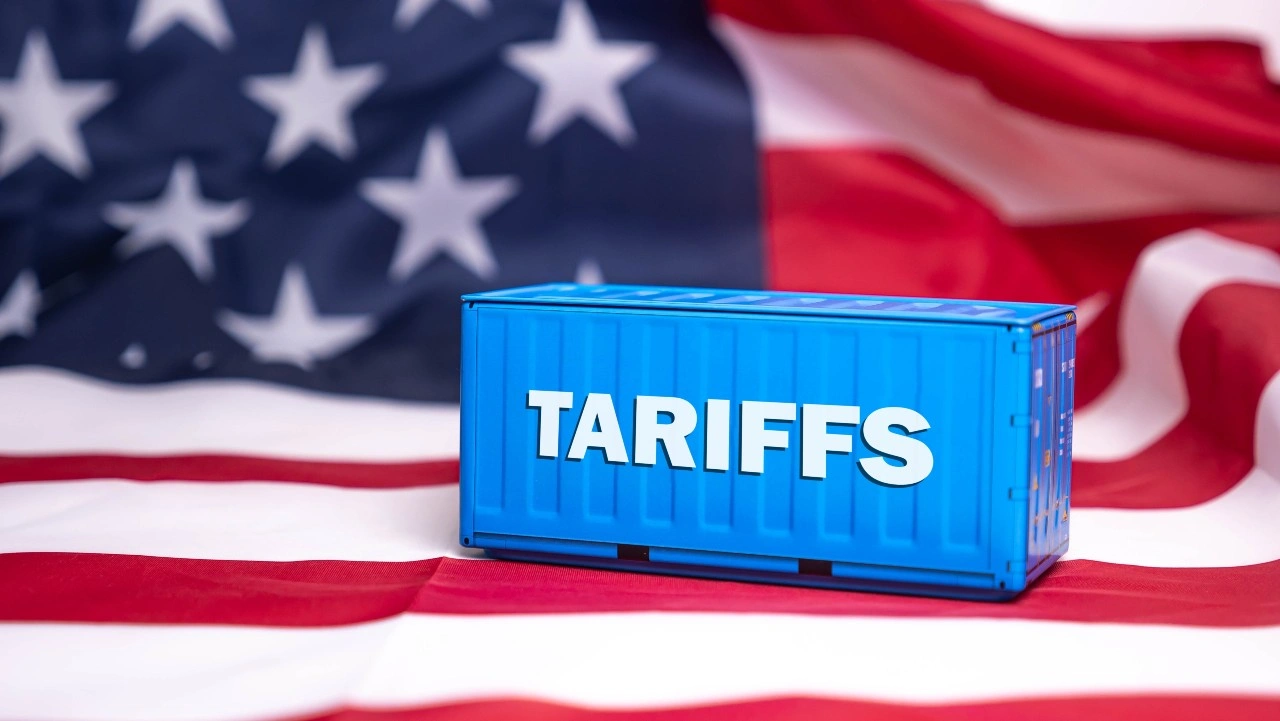Crypto Market Insights: A Deep Dive into Q1 2025

The first quarter of 2025 delivered a significant mix of opportunity, innovation, and volatility in the cryptocurrency market. From regulatory shifts to macroeconomic pressure and ecosystem evolution, Q1 provided valuable lessons and raised new questions for the months ahead. As digital assets move further into the mainstream, both seasoned investors and newcomers must understand not just the price charts, but the broader forces shaping the industry.
This in-depth review explores Q1 2025 through the lens of market performance, global events, regulatory actions, user adoption, and payment innovation, offering actionable insights for crypto users, digital payment companies, and e-commerce entrepreneurs.
Market Momentum Meets Volatility: Bitcoin’s Journey Through Q1 2025
The first quarter of 2025 demonstrated the evolving dynamics of cryptocurrency markets, blending institutional adoption, technological advancements, and macroeconomic turbulence. While Bitcoin’s initial surge past $80,000 in early March reflected optimism in the sector, the ensuing correction revealed underlying risks, particularly its growing correlation with traditional finance. Ethereum, alongside other assets, followed a similar trajectory, reinforcing the influence of broader economic forces on digital assets.
Bitcoin’s Early Surge: Institutional and Macroeconomic Catalysts

Bitcoin reached a quarterly high of $84,000 in early March, fueled by several key factors:
- Institutional Expansion via ETFs The approval of multiple Bitcoin ETFs in late 2024 provided a regulated entry point for institutional investors. Unlike previous crypto cycles, where volatility was largely retail-driven, institutions now play a dominant role in price discovery, controlling substantial liquidity through ETF products.
- BlackRock’s Bitcoin ETF surpassed $10 billion in assets under management within months of launch, marking a significant milestone.
- Fidelity and Grayscale followed with expanded offerings, intensifying competition in the regulated crypto asset space.
- Fiat Instability Driving Demand Global fiat currency instability also played a role. Persistent inflation in Europe and the United States, along with uncertainty around monetary policies, led investors to seek alternative stores of value. Bitcoin, often dubbed “digital gold,” benefited from this trend, acting as a hedge against declining purchasing power.
- Ethereum’s Growth Supporting the Ecosystem Ethereum’s Layer-2 upgrades continued to improve scalability, attracting institutional adoption for decentralized applications. The ecosystem saw increased demand from DeFi protocols, reinforcing ETH’s role as a structural pillar of blockchain finance.
The April Correction: Macro Headwinds Hit Crypto Sentiment
Despite its early success, Bitcoin faced strong macroeconomic pressures by the end of Q1, leading to a sharp drop below $62,000 before stabilizing near $70,000. Several global factors contributed to this reversal:
- Tightening Monetary Policy
- The Federal Reserve maintained high interest rates, signaling prolonged economic tightening. Traditionally, higher interest rates discourage investments in risk assets, including cryptocurrencies, as borrowing becomes more expensive.
- A stronger U.S. dollar index (DXY) weighed on Bitcoin’s price. When the dollar strengthens, capital typically flows away from speculative markets, including crypto.
- Geopolitical Instability and Trade Disruptions
- The Trump administration’s tariff policies on imports disrupted global trade, increasing market uncertainty. Tariff-driven economic slowdown affected investor sentiment, reducing liquidity across speculative assets.
- Institutional Trading Behavior
- Large institutions reallocated assets to fiat following Bitcoin’s rally, triggering automated sell-offs via algorithmic trading strategies.
- Crypto ETF outflows suggested cautious positioning among hedge funds and asset managers preparing for economic turbulence in Q2.
Market Sentiment: The Growing Role of Institutional Adoption

While Bitcoin’s volatility remains high, it is no longer an isolated asset class. Its increasing correlation with central bank policies, macroeconomic trends, and institutional trading strategies underscores its integration into global finance.
Ethereum’s DeFi activity held steady, showcasing continued demand for blockchain-based financial applications. Analysts predict that ETH’s Layer-2 adoption and smart contract advancements will further stabilize its market position, supporting broader institutional adoption.
Unlike past cycles, where corrections led to extended “crypto winters,” this downturn appears to reflect a controlled recalibration rather than collapse. The presence of ETFs, stablecoins, and institutional frameworks suggests that crypto markets are evolving toward maturity, trading more like traditional financial assets rather than speculative instruments.
Key Takeaways for Investors and Businesses
The start of 2025 showcased both market expansion and macroeconomic risks, reinforcing the importance of strategic positioning for investors and businesses:
- Institutional Adoption Continues: Bitcoin and Ethereum are gaining deeper traction in regulated markets, minimizing extreme volatility.
- Regulatory Developments Matter: Stablecoin frameworks, ETF expansions, and DeFi regulations will shape the next phase of adoption.
- Macroeconomic Trends Drive Liquidity: Trade policies, interest rates, and fiat instability directly influence crypto price movements.
Trump’s Tariffs and Trade Tensions Effection

In early April 2025, former President Donald Trump reignited global trade tensions by announcing sweeping tariffs as part of his renewed protectionist agenda. These measures included a 25% levy on auto imports, a 10% tariff on Chinese goods, and additional duties on steel and aluminum. While the policy officially came into effect at the start of Q2, its anticipation had already begun influencing market behavior weeks earlier. Investors, wary of the economic fallout from disrupted supply chains and rising costs, adopted a risk-averse stance in late March, pulling capital from volatile assets like cryptocurrencies.
The crypto market, often viewed as a speculative and risk-on asset class, felt the pressure of this shift in sentiment. Bitcoin, which had surged past $80,000 in early March, experienced a sharp sell-off as investors sought safer harbors such as cash and government bonds. By early April, Bitcoin briefly dipped below $62,000 before stabilizing around $70,000. Ethereum and other altcoins mirrored this volatility, underscoring the interconnectedness between macroeconomic policies and digital asset markets.
Amid this turbulence, a controversial yet impactful idea surfaced: the potential use of U.S. tariff revenue to purchase Bitcoin for strategic reserves. This notion, while speculative, sparked widespread debate about the role of digital assets in national economic strategy. Bo Hines, Executive Director of the Presidential Council of Advisers on Digital Assets, suggested that tariff revenue could serve as a budget-neutral mechanism for accumulating Bitcoin as part of the U.S. Strategic Bitcoin Reserve. This proposal aligns with broader discussions around the Bitcoin Act of 2025, introduced by Senator Cynthia Lummis, which advocates for integrating Bitcoin into federal reserves alongside revalued gold certificates.
The implications of such a move are profound. If governments begin accumulating crypto reserves or formally integrating digital assets into trade policy, it could redefine the global relevance of cryptocurrencies. Bitcoin, often seen as a decentralized hedge against inflation, could evolve into a tool of geopolitical leverage. This shift would not only legitimize the asset class but also introduce new layers of complexity for compliance and regulation. Crypto entrepreneurs and payment providers must closely monitor these developments, as national-level adoption could accelerate mainstream integration while imposing stricter regulatory frameworks.
Trump’s tariffs and the ensuing trade tensions have highlighted the growing intersection between macroeconomic policies and the crypto market. The speculative idea of using tariff revenue to fund Bitcoin reserves underscores the evolving role of digital assets in global finance.
Institutional Movement and Regulation: The Convergence of Traditional and Digital Finance
Cryptocurrency’s role in institutional finance continues to evolve, bridging the gap between decentralized assets and traditional financial markets. Throughout Q1 2025, institutional interest remained strong, despite regulatory uncertainty. Major financial players such as BlackRock, Fidelity, and Vanguard have expanded their crypto offerings, reinforcing digital assets as legitimate investment vehicles. Meanwhile, the SEC and DOJ have signaled a shift toward structured regulatory frameworks, potentially paving the way for more stable institutional adoption.
Institutional Expansion: Crypto ETFs and Traditional Asset Integration
Institutional investors have fundamentally changed the liquidity dynamics of Bitcoin and Ethereum. Following the SEC’s approval of spot Bitcoin ETFs, funds like BlackRock’s iShares Bitcoin Trust (IBIT) and Fidelity’s FBTC have significantly contributed to Bitcoin’s market stability. As of April 2025, IBIT’s assets under management exceed $10 billion, making it one of the fastest-growing financial products of the year. Fidelity has similarly expanded its ETF offerings, rivaling BlackRock in institutional dominance.
Ethereum’s integration into institutional finance is also accelerating. Several firms, including Goldman Sachs and Citadel Securities, have begun offering Ethereum-backed products, recognizing its potential in decentralized finance (DeFi) applications, smart contracts, and tokenization. Analysts predict that ETH’s ongoing adoption as the “internet bond” will reinforce its position as a primary asset in institutional portfolios.
Additionally, crypto exchanges such as Kraken, Coinbase, and Binance are expanding beyond traditional crypto offerings. Kraken, for instance, recently launched stock trading and ETF products, directly competing with retail brokerages like Charles Schwab and Robinhood. This merging of traditional and digital finance platforms signals a fundamental shift in how markets interact with crypto-based assets.
Regulatory Signals: SEC and DOJ’s Evolving Stance
U.S. regulators have hinted at a more structured approach to crypto oversight. The SEC, previously known for aggressive enforcement actions against exchanges, recently withdrew its lawsuits against major firms like Coinbase and Binance, shifting its focus toward industry-wide regulatory guidance. Acting SEC Chair Mark Uyeda emphasized the need for a “sensible regulatory path” for digital assets, leading to the establishment of a Crypto Task Force focused on policy development.
The Department of Justice (DOJ) is also restructuring its approach, prioritizing fraud prevention and compliance enforcement over outright litigation. This shift suggests that regulators are increasingly looking to work with crypto businesses rather than against them, providing greater legal clarity and fostering innovation.
CBDC Developments: Global Governments Expand Digital Currency Pilots
Beyond the private sector, international governments are rapidly exploring central bank digital currencies (CBDCs) to modernize financial infrastructure. Several key nations have launched extensive pilot programs:
- South Korea’s Project Hangang will test real-world CBDC transactions with 100,000 participants, integrating blockchain-based banking solutions into traditional finance.
- Brazil’s Digital Real aims to improve cross-border transactions, positioning the country as a leader in Latin America’s digital payment revolution.
- The UAE’s Digital Dirham seeks to streamline trade settlements and interbank transactions using blockchain-backed digital currency.
CBDC adoption reflects a growing government appetite for digital financial infrastructure, reinforcing blockchain’s role in mainstream financial systems.
The Future of Institutional and Regulatory Movements
Several key trends will shape crypto’s integration into global finance:
- Mergers between traditional and digital finance platforms: Crypto exchanges like Kraken and Coinbase are evolving into hybrid financial service providers, offering stocks, ETFs, and forex products alongside digital assets.
- Increased pressure on centralized exchanges for transparency: Regulatory scrutiny is pushing platforms to enhance proof-of-reserves and real-time auditing, particularly as fiat trading pairs become more prominent.
- Tighter AML/KYC policies shaping DeFi gateways: The Financial Action Task Force (FATF) has updated its global AML guidelines, requiring DeFi protocols and wallet providers to implement identity verification measure.
The New Era of Institutional Crypto Adoption
Institutional engagement with crypto remains stronger than ever, despite regulatory uncertainty. The convergence of regulated financial instruments, structured compliance frameworks, and CBDC adoption is accelerating crypto’s transformation from a speculative asset to an integrated part of global finance
Retail Adoption and Stablecoin Growth: The Rise of Practical Crypto Use Cases
Retail adoption of cryptocurrencies remained strong and resilient throughout Q1 2025, particularly in regions facing currency volatility and limited banking infrastructure. Latin America, Southeast Asia, and parts of Africa saw increased usage of stablecoins like USDT and USDC for everyday payments, savings, and remittances. Meanwhile, in developed markets, crypto’s role in e-commerce and digital payments expanded, with merchants integrating blockchain-based solutions to reduce transaction fees and streamline cross-border payments.
Stablecoin Adoption in Emerging Markets: A Financial Lifeline
Stablecoins have become essential financial tools in regions where fiat currency instability and banking limitations make traditional financial services unreliable. In Latin America, countries like Argentina and Venezuela have seen surging adoption of USDT and USDC, as citizens seek alternatives to inflation-prone national currencies. According to a report by CoinLaw, stablecoin transactions in Latin America grew by 45% year-over-year, with Brazil and Mexico leading in crypto remittance volumes.
In Southeast Asia, stablecoins are increasingly used for cross-border trade and remittances, particularly in the Philippines and Indonesia, where migrant workers rely on digital assets to send money home. The crypto remittance market in Southeast Asia is now valued at $30 billion annually, reflecting the growing trust in blockchain-based financial solutions.
Africa has also emerged as a key region for stablecoin adoption, with Nigeria and Kenya leading the charge. The Nigerian government’s recent stance on crypto regulation has encouraged more businesses to accept stablecoins for daily transactions, reducing reliance on volatile local currencies.
Crypto’s Role in E-Commerce: Payment Gateways and Merchant Adoption
In developed markets, crypto’s appeal for e-commerce has grown significantly. Merchants are increasingly integrating crypto payment gateways to reduce payment friction, lower transaction fees, and eliminate currency conversion issues. Platforms like Shopify, WooCommerce, and Magento have expanded support for crypto payments, allowing businesses to accept Bitcoin, Ethereum, and stablecoins seamlessly.
- Shopify and WooCommerce now support Coinbase Commerce, Binance Pay, and NOWPayments, enabling merchants to process crypto transactions with near-zero fees.
- Enterprise platforms are also embracing crypto payments, with Microsoft and Amazon exploring blockchain-based payment solutions to improve efficiency in global transactions.
This trend reflects a broader shift toward crypto as a practical financial tool, rather than just a speculative asset.
Wallet UX Improvements and the Rise of Self-Custody
One of the most significant developments in retail crypto adoption has been the improvement in wallet user experience (UX) and the growing popularity of self-custody tools. As security concerns remain a barrier to mainstream adoption, wallet providers have focused on simplifying interfaces and enhancing security features.
- Tangem Wallet introduced seedless security, eliminating the need for traditional recovery phrases while maintaining high-level encryption.
- MetaMask’s 2025 roadmap emphasizes intuitive design, seamless network switching, and improved transaction transparency, making self-custody more accessible to everyday users.
- WalletConnect has launched new self-custody tools, demonstrating how users can securely manage assets without relying on centralized exchanges.
These advancements reinforce the idea that crypto is no longer just about trading—it’s becoming a practical tool for financial independence.
Crypto is evolving beyond speculation and becoming a functional financial instrument. Whether through stablecoin adoption in emerging markets, e-commerce integration, or self-custody innovations, digital assets are reshaping global finance. As adoption continues to grow, businesses and users alike should stay informed on regulatory developments and technological advancements to maximize the benefits of crypto-powered financial solutions.
Looking Ahead to Q2 and Beyond
With the foundation of Q1 2025 laid, Q2 presents both opportunities and risks as crypto markets navigate geopolitical tensions, regulatory shifts, and technological advancements. While stabilization is possible, the broader financial landscape will continue to influence digital assets. Several key developments are expected to shape the next quarter.
Potential Bitcoin Accumulation by Sovereign Entities
One of the most intriguing trends to watch is the potential accumulation of Bitcoin by sovereign entities. Governments worldwide are increasingly exploring Bitcoin as a strategic reserve asset, either through direct purchases or repurposed holdings from criminal seizures.
- The U.S. government currently holds over 212,000 BTC, primarily acquired through enforcement actions against cybercriminals and dark web markets. Discussions are underway regarding whether these holdings should be formalized into a national Bitcoin reserve.
- El Salvador continues its Bitcoin accumulation strategy, reinforcing its position as the first country to adopt BTC as legal tender. Bhutan has also emerged as a sovereign Bitcoin holder, actively acquiring BTC through market trading rather than relying on law enforcement seizures.
If more governments begin actively accumulating Bitcoin, it could reshape global financial power dynamics, positioning BTC as a digital reserve asset alongside gold and fiat currencies.
CBDC Developments Entering Real-World Testing
Central Bank Digital Currencies (CBDCs) are moving beyond theoretical discussions and entering real-world testing phases. Several nations are launching pilot programs to evaluate CBDC feasibility in everyday transactions.
- South Korea’s Project Hangang will begin testing CBDC-based payments with 100,000 participants in April. Users will convert their bank deposits into digital tokens, which can be used for transactions via QR code payments.
- China’s e-CNY pilot continues expanding, with adoption growing among businesses for high-value corporate transactions (International Banker).
- The European Central Bank’s Digital Euro project is advancing toward its next phase, focusing on wholesale CBDC applications.
These developments indicate that CBDCs are transitioning from experimental concepts to practical financial tools, potentially influencing global monetary policy.
Clarity on Stablecoin Legislation in the U.S. and EU
Stablecoins remain a critical component of the crypto ecosystem, but regulatory uncertainty has hindered their widespread adoption. Q2 is expected to bring greater clarity on stablecoin legislation, particularly in the U.S. and EU.
- The U.S. is considering two major stablecoin bills: the GENIUS Act and the Waters Bill. The GENIUS Act promotes a market-driven approach, allowing smaller issuers to operate under state supervision, while the Waters Bill seeks federal oversight and stricter reserve requirements.
- The EU’s MiCA framework is set to fully regulate stablecoin issuers, requiring strict reserve disclosures and licensing requirements.
These regulatory efforts will determine whether stablecoins can achieve mainstream financial integration or face restrictions that limit their growth.
Rising Demand for Crypto Payment Integration Among Global Merchants
Crypto’s role in global commerce is expanding, with merchants increasingly integrating blockchain-based payment solutions to reduce transaction fees and streamline cross-border payments.
- Shopify, WooCommerce, and Magento have expanded support for crypto payment gateways, enabling businesses to accept Bitcoin, Ethereum, and stablecoins seamlessly.
- Enterprise platforms like Microsoft and Amazon are exploring blockchain-based payment solutions to improve efficiency in global transactions.
This trend reflects a broader shift toward crypto as a practical financial tool, rather than just a speculative asset.
Crypto’s Embedded Role in Global Finance
Q1 2025 reinforced the idea that crypto is no longer an isolated sector—it is deeply embedded in macroeconomics, international policy, and consumer behavior. As Q2 unfolds, Bitcoin’s role in sovereign reserves, CBDC adoption, stablecoin regulation, and merchant integration will shape the next phase of the industry.
Staying Informed, Staying Ready
Whether you’re a newcomer curious about blockchain or a crypto-native building the future of payments, understanding market dynamics is key. Crypto is entering a new era of utility, regulation, and adoption. The headlines may focus on prices, but the real value lies in evolving infrastructure, policy shifts, and user empowerment.
At AURPAY, we remain committed to helping users, businesses, and communities navigate these changes. Our focus is on education, transparency, and innovation—empowering you to build confidently in the world of digital commerce.

